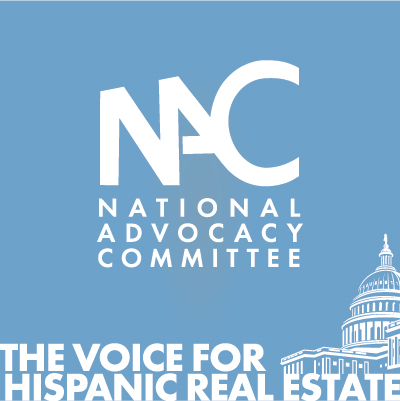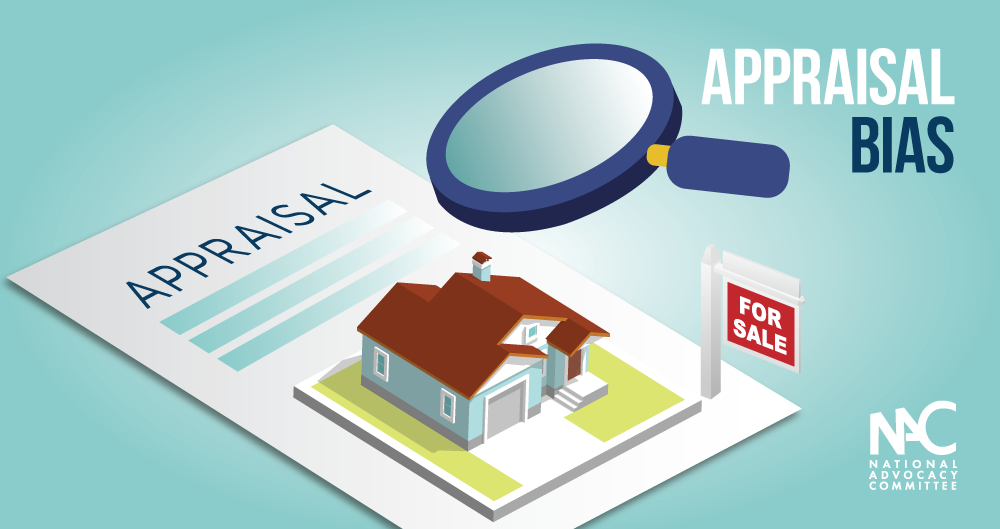NAC Blog: Let’s Talk About Appraisal Bias
Celebrating NAHREP familia, cultura, politics, and grassroots action
April 7, 2022
Qué onda mi gente?!
NAHREP is squarely focused on bridging the wealth gap, and we know homeownership is one of the most critical strategies for building generational wealth. According to the State of Hispanic Homeownership Report, Latino homeowners have 28 times the wealth of Latino renters, with a median net worth of $171,900 compared to $6,210. However, we also want to make sure that Latinos are reaping the same rewards from homeownership as other groups on our road toward wealth creation. This is why the issue of appraisal bias is so important. How much a home is appraised for determines how much equity an individual can derive from homeownership.
It’s interesting because when I speak to our members, I don’t hear a lot of concern on the issue of appraisal bias. However, Freddie Mac conducted a study last year and the numbers are pretty alarming, especially for Latino households. This is why data is so powerful. Things that we don’t notice are made evident when analyzing data. We don’t notice because home prices are appreciating by so much!
So, what does the data tell us?
- Latinos are twice as likely to experience undervaluing of appraisals: The Freddie Mac report showed that home purchases in majority-Latino neighborhoods were about twice as likely to result in a value below the actual contract price, compared to appraisals in predominantly White neighborhoods.
- Appraisal bias has a higher likelihood of impacting Latinos than other demographics: About 15.4% of single-family properties in majority-Latino census tracts appraised lower than their contracted price between 2015 and 2020, compared to 12.5% of homes in majority-Black areas and 7.4% in majority-White areas.
- Latino applicants are more likely to fall below the contract price: When applicants were Latino, 9.5% of appraisals fell below the contract price, compared with 8.6% for Black applicants and 6.5% for White applicants.
- Appraisal bias is most pronounced in areas where Latinos comprised more than 80% of the population: Close to 15% of properties appraised below their contract price in census tracts where 50% – 80% of residents were Latino. That rate increased to 16.7% in areas where Latinos represent 80% or more of the population.
As a result of these findings, the federal government is currently working on various interagency initiatives to look into this issue and create guardrails. One of the areas that I’m particularly interested in is increasing the number of Latinos who enter the appraisal industry. However, in order to do so, we would have to lower the barriers to entry.
The 5 Takeaways from PAVE: Property Appraisal and Valuation Equity Task Force:
- Hold the appraisal industry more accountable: The plan outlines steps to increase oversight and accountability of the appraisal industry. A legislative proposal is already underway that seeks to modernize the appraisal industry’s governance structure and ensure that there is better coordination and collaboration between federal government agencies to prevent cases of discrimination or bias. This would function similarly to fair lending laws and oversight.
- Empower consumers with information and assistance: The PAVE task force also shared recommendations to federal agencies to ensure that they are releasing guidance for consumers, so they know what to do if they want to contest an appraisal they believe was undervalued.
- Prevent automated algorithmic bias: AVM models or automated valuation models have become more common. The PAVE task force urges the federal agencies to include non-discriminatory language in their quality control standards for AVM models.
- Cultivate a more inclusive appraiser profession: This one is huge. 97% of appraisers are White. In fact, when the House Financial Services Committee asked me to put together a meeting with Latino appraisers, it was alarming how few Latino appraisers I could find. When you think about the Urban Institute’s prediction that 70% of new homeowners over the next 20 years will be Latino, that’s a problem. The plan is to remove “unnecessary educational and experience requirements that make it difficult for underrepresented groups to access the profession and to strengthen anti-bias, fair housing, and fair lending of existing appraisers.”
- Leverage more federal data and expertise: We all know that data is power. The PAVE task force is asking for a database of federal appraisal data to help better study, understand, and address appraisal bias.
Curious to get all of your thoughts on this issue! Let’s start the conversation, since we have not talked about this enough.
Un abrazo!

About Noerena Limón
Noerena Limón is NAHREP’s Executive Vice President of Public Policy and Industry Relations. Noerena heads the organization’s policy and advocacy efforts on issues ranging from homeownership, housing inventory, credit access and immigration.
Prior to joining NAHREP, Noerena spent six years at the Consumer Financial Protection Bureau (CFPB) and served as a political appointee under President Obama in the White House Office of Political Affairs.




